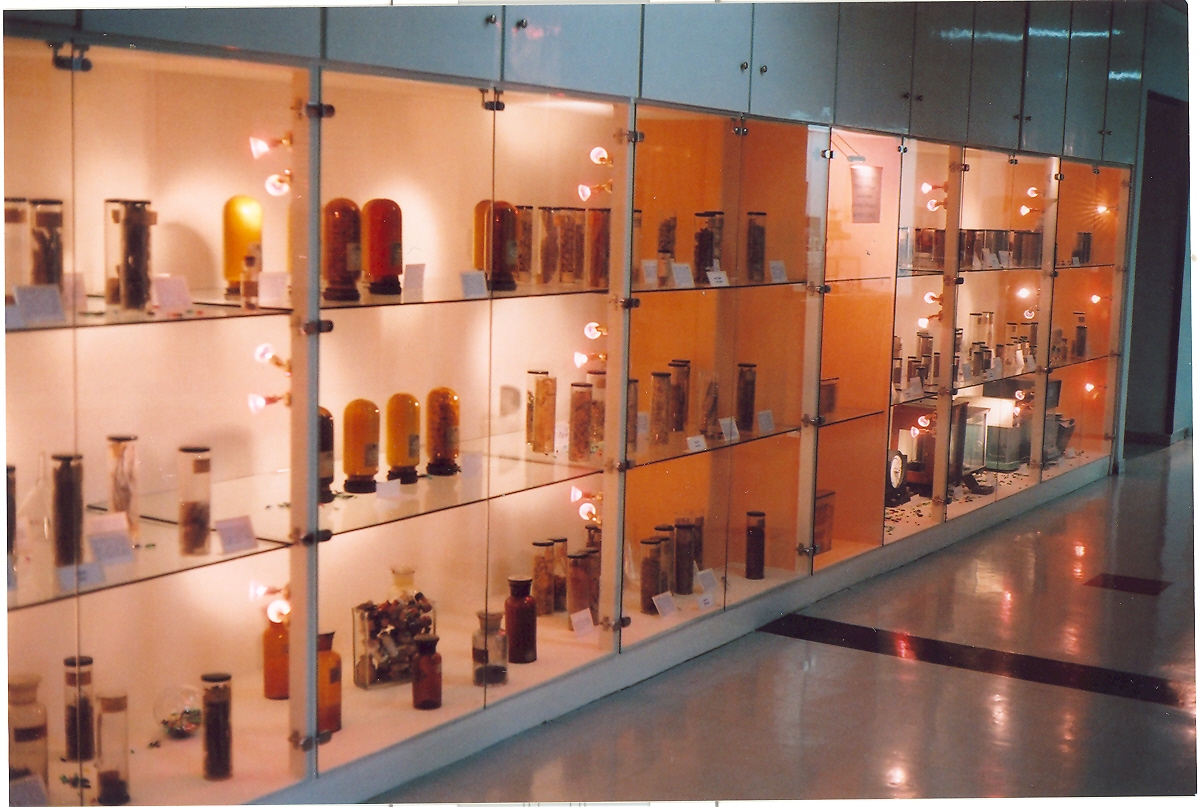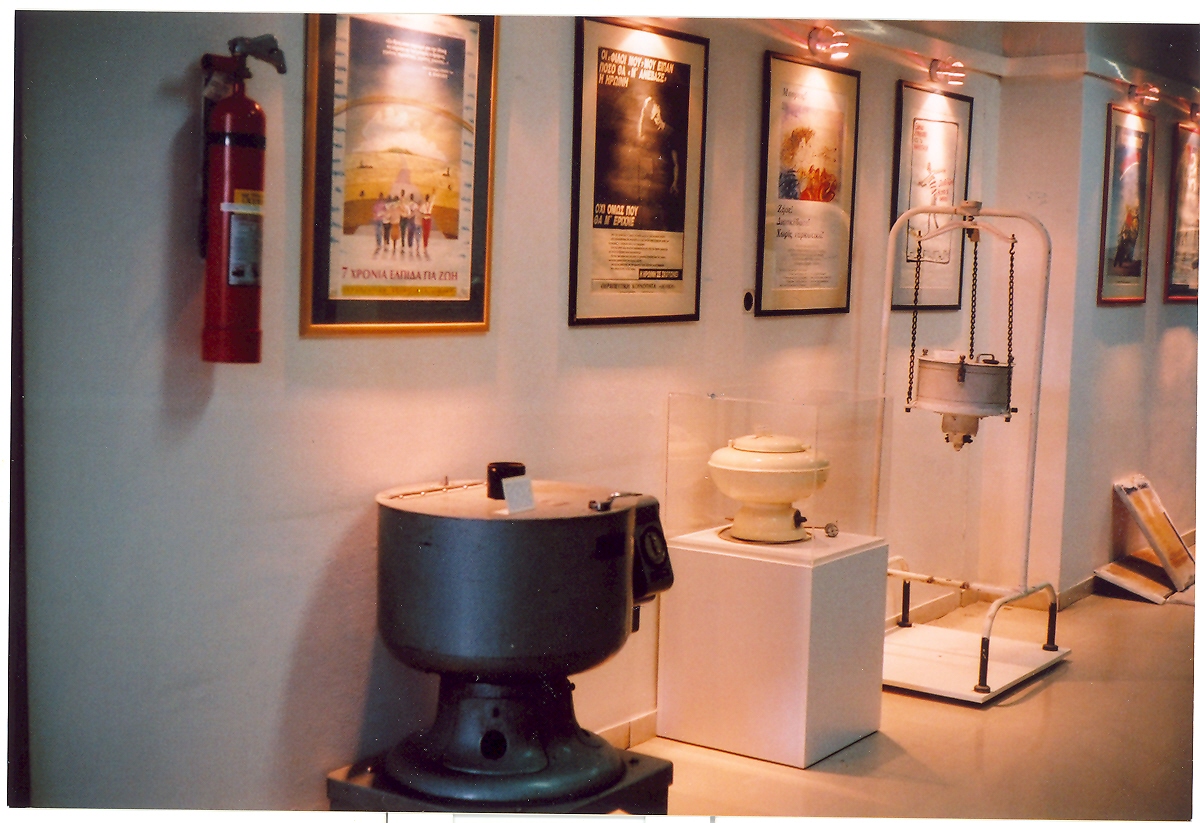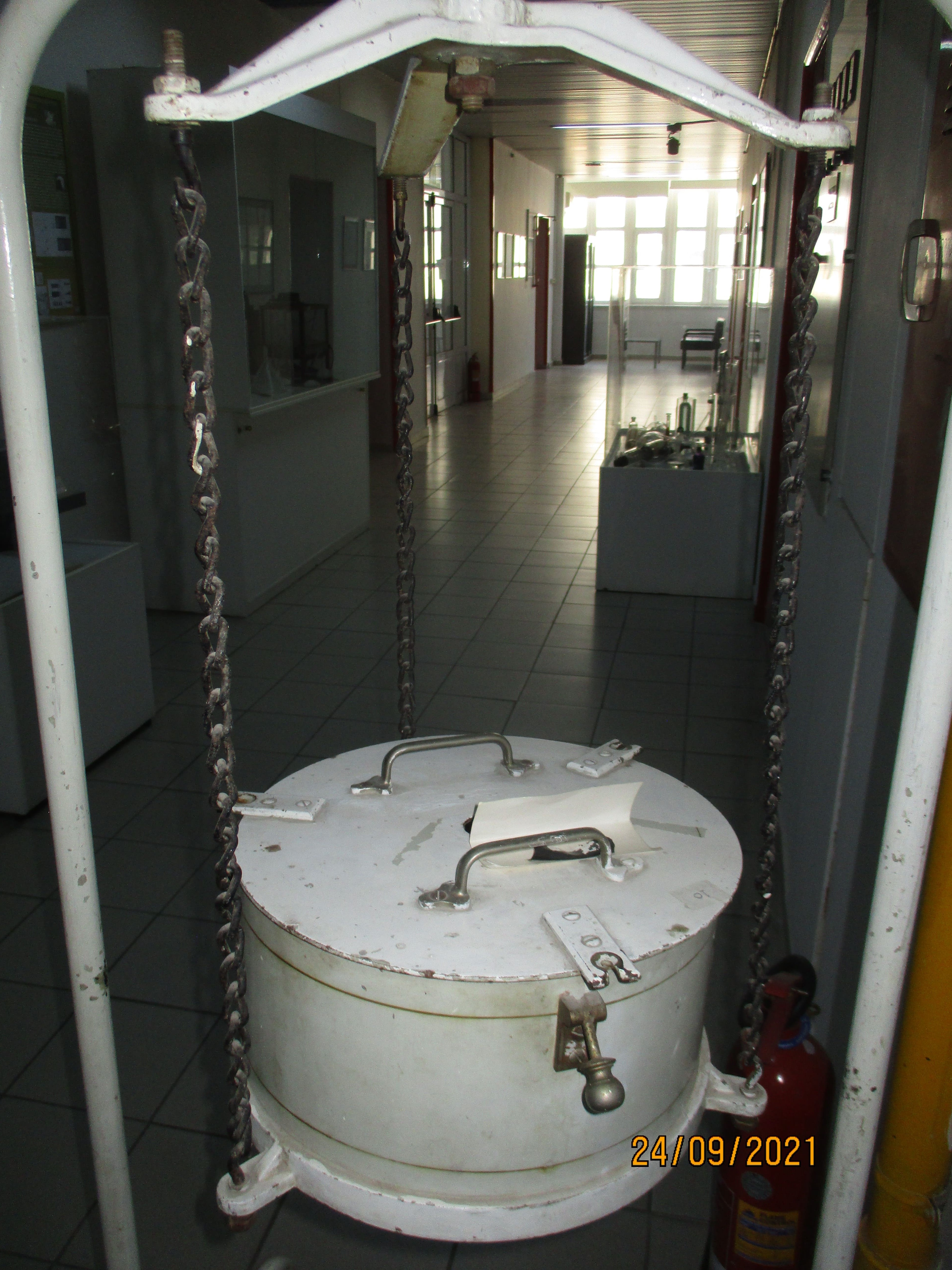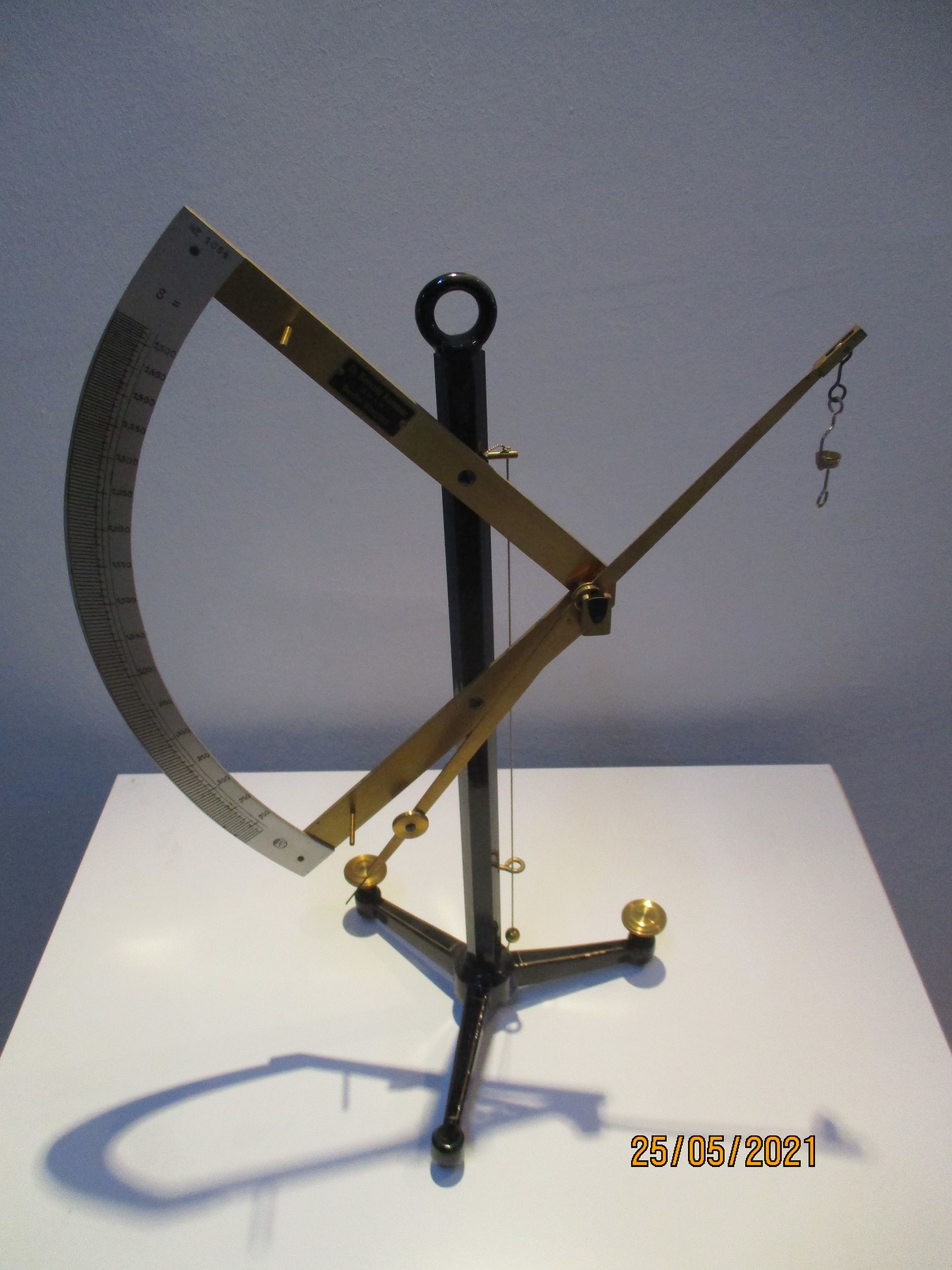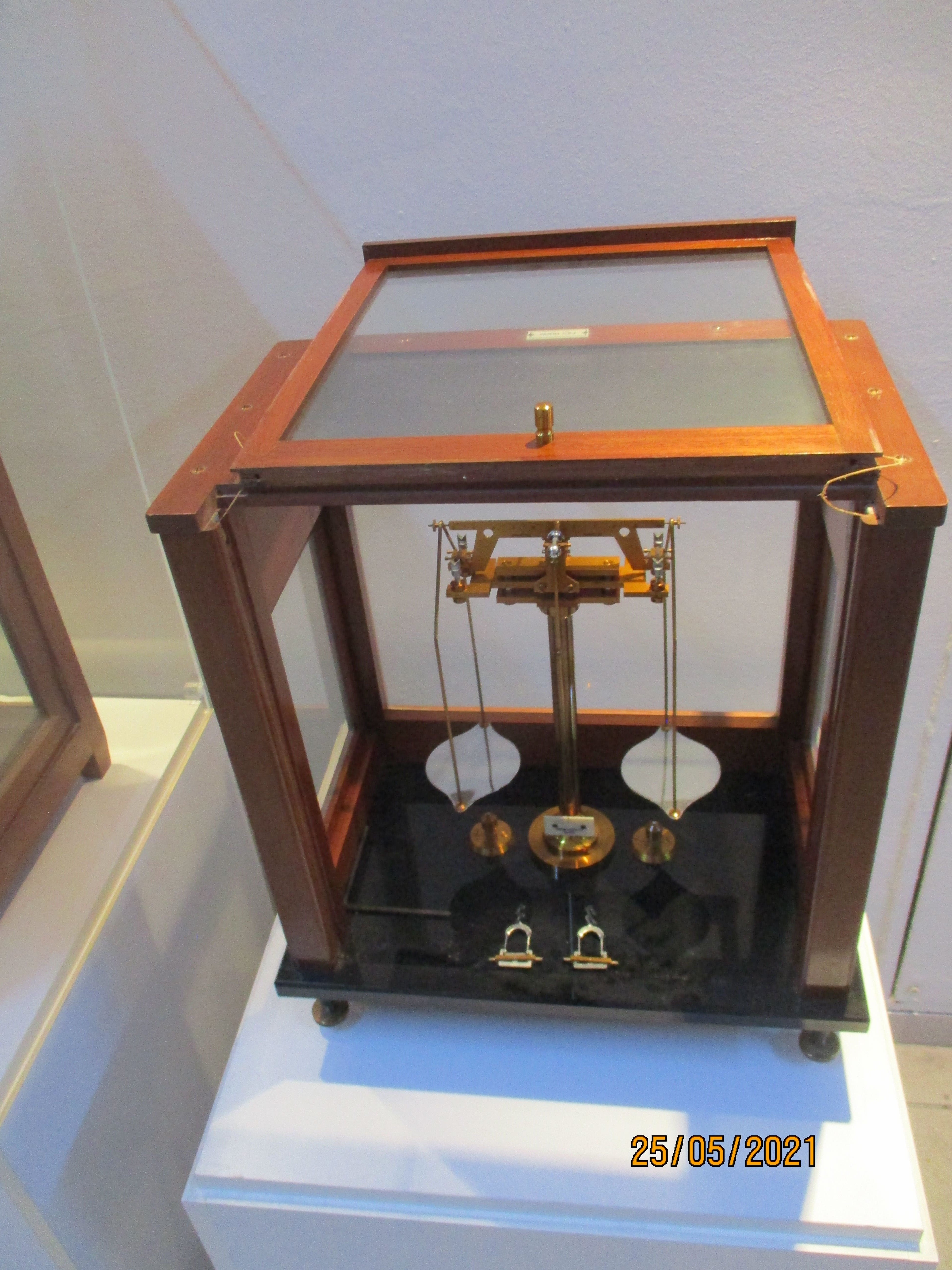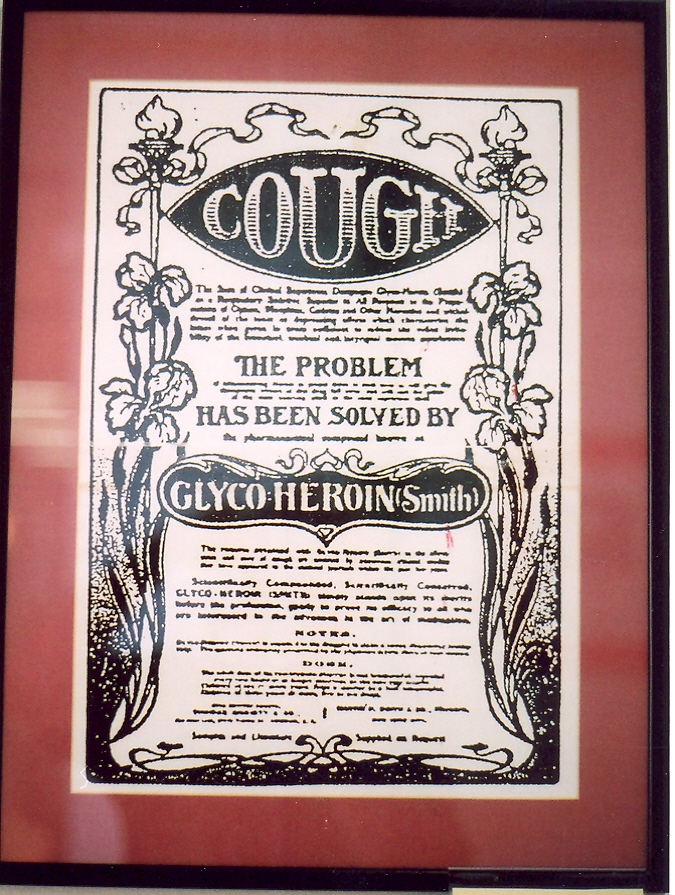Identity
The establishment of the Museum of Pharmacology has been based on an alternative philosophy; it intends not only to display the old instruments of the laboratory of pharmacology but also the fertile interaction between science and society that enhances the dissemination of knowledge in both the academic and the social environment. In particular: the museum helps students to engage in issues of pharmacological research and the philosophy of science and provides stimuli for the visitor to become acquainted with the science of pharmacology and the interaction between pharmacology and society, for example, the older and even the recent artistic medication posters demonstrate that the main idea centers on promoting a drug and not providing information about it. Also, the museum relates the primary problems of public health and their consequences (i.e., alcohol consumption, smoking, drug abuse, etc.) with pharmacology (alcohol, tobacco, heroin, are pharmacological substances). It demonstrates the momentum of technological evolution and its contribution to research.
In general, its positive influence results from the concerns it raises in the visitor on the usefulness of specific devices (past and present), the medication production process, the types of medications (attributes and historical necessities they serve), the medical advertising over time, the relevance of research ('wonderful results of medications' proven 'unacceptable results' in only ten years).
History
The Museum of Pharmacology, an innovative museum of the National and Kapodistrian University of Athens (NKUA), is housed in the Medical School's Laboratory of Pharmacology. The vision and the effort towards the museum's establishment in 1998 belong to Associate Professor I. St. Papadopoulos. The museum was completed in 2003 with the contribution of Professors P. Galanopoulou, Ch. Karageorgiou, Ch. Liapis, and medical student A. Zarros and the significant support of the Rectorate of the University of Athens. This is a pioneering idea since it is our country's first museum of its kind, aimed to advocate the advancement of the science of pharmacology. The manner in which the museum's exhibits are organized goes beyond merely exhibiting old instruments of the laboratory of pharmacology but promotes the interaction between science and society, which enhances the dissemination of knowledge in both. In the museum's display cases exist more than 600 rare exhibits, including collections of old laboratory instruments and an extensive collection of plants from the time of Pharmacology professor G. Ioakimoglou (1928–1963). Some displays make a distinct impression on the museum visitor, such as an advertisement from 1929, which advertises heroin as a cough medicine to replace morphine, only to be proven 30 years later that it causes addiction.
Types of audiences
According to the philosophy of its foundation and its task to facilitate interaction between science and society, the museum is addressed to students, undergraduate students, and graduate students from Greece and abroad who are involved with museums and, also, the broader public. The presentations and lectures it organizes aim to disseminate the knowledge deriving from the museum's exhibits and promote the thorough study of the science of medical pharmacology.
Collections & Exhibitions
- Plants, such as quinine, and substances used as the sources for the development of medications. - Laboratory equipment that includes, besides glassware, water baths, devices of isolated instruments to conduct experiments, and collections of old models of scales, centrifuges, incubators, etc., indicating the development of pharmacology technology.
- Pharmacology scientific texts from the beginning of the 20th century. -Advertising illustrations from the mid-20th century concerning hospitals (e.g., Evangelismos Hospital), pharmacies (e.g., Damvergis Pharmacy, Great American Pharmacy), medications (e.g., heroin as cough medicine, etc.) -Material pertaining to the interconnection of public health issues and their consequences with pharmacology such as a) the posters of the Ministry of Health referring to alcohol consumption, smoking, drug-use and b) statistical data of drug-related deaths.
Events & Activities
In order to fulfill its goals, the Museum:
-Organizes guided tours for the public.
-Organizes guided tours combined with lectures for students, undergraduate and graduate university students from Greece and abroad who are involved with medicine, pharmacology, and museology.
-Participates in educational activities: For example, in the context of a student competition on "The exhibits of the Museum through the eyes of the students," one of the prizes was awarded to a group of students presenting a topic that had been assigned to them by the Head of the Museum during their visit there.
- Participates in conferences aspiring to highlight the foundation, the objectives, and the exhibits of the Museum. More specifically, it participated a) in the international Pharmacology Conference (2008) organized by the Hellenic Society of Pharmacology, where it received the 3rd prize for the individuality and originality of its presentation b) at the Universeum conference organized in Athens in 2015. Footnote: Before the COVID-19 pandemic, the Museum was receiving students and university students 4-5 times per year in recent years.
Accessibility
The museum is accessible by a lift from the entrance level to the elevated ground floor and an elevator from the ground floor to the other floors.
Terms of Operation
The Museum is open daily from 9.00 am to 3.00 pm. Visits outside working hours and on the weekends are carried out on individual arrangements with the secretariat.
Director: Haris Liapi, Professor of Medical School.

